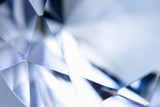A Brief History of Diamond Cuts

There are many different cuts of diamond. For an in-depth explanation of diamond cuts and clarity, please read this informative article. (link to blog post 1). Diamond cuts have evolved over time. Different cuts have gained and waned in popularity in different periods of history. Today, Harrington & Co are going to give our customers a brief history of diamond cuts. Read on to find out more.
The First Record of Diamonds and Diamond Cutting
The history of these beautiful crystals can get traced back to ancient India, almost four centuries BC. Diamonds were also known, worn and collected by the ancient Romans. The first records of diamond cutting and shaping come from India and the Middle East in the first few centuries AD. European records have emerged later, in the 13th century.
The First Cut
The first ever official diamond cut came to be in the fifteenth century. This was the same time when jewellers discovered that diamonds could get cut with their own dust. This first cut was called the table cut. This was the same century that European aristocracy begun the tradition of diamond engagement rings!
Rose and Transition Cut
The sixteenth century saw the discovery of another two diamond cuts, the rose and the transition. By this point tools got invented that allowed jewellers to cut facets into diamonds. It also saw an increase in popularity and demand for diamonds.
A rose cut diamond has 24 facets, and a distinct, subtle beauty. Their name comes from the soft and delicate diffused light that they impart. This is a stark contrast to the brightly lit brilliance of the modern day cuts. A rose cut diamond is unique in that it is flat on the bottom and dome shaped on the top.
The Next Major Development
The next major development in diamond cut history occurred in the early 18th century. Brazil became a major player in diamond production and with this increased output came a new cut – the old mine cushion.
These cuts hat a slightly curved edge which formed a sort of soft square. They vary in facet patterns but have a small table, high crown and a large culet, which gives them an architectural appearance. During the same era steam driven machines allowed diamond cutters to achieve new levels of perfection and brilliance.
…And Finally
After several more centuries and varieties of cuts we come to the one that is most prominent today – the Modern Brilliant cut. This cut truly makes a diamond shine and dazzle brilliantly and has a signature 58, or sometimes 57, facets.
Seeking to Impress?
Are you looking to impress that special somebody with a diamond ring or piece of jewellery? A vintage item may be the perfect gift. Harrington & Co have a range of vintage pieces that come guaranteed to impress. Please browse our range. If you have any enquiries, don’t hesitate to contact us.
